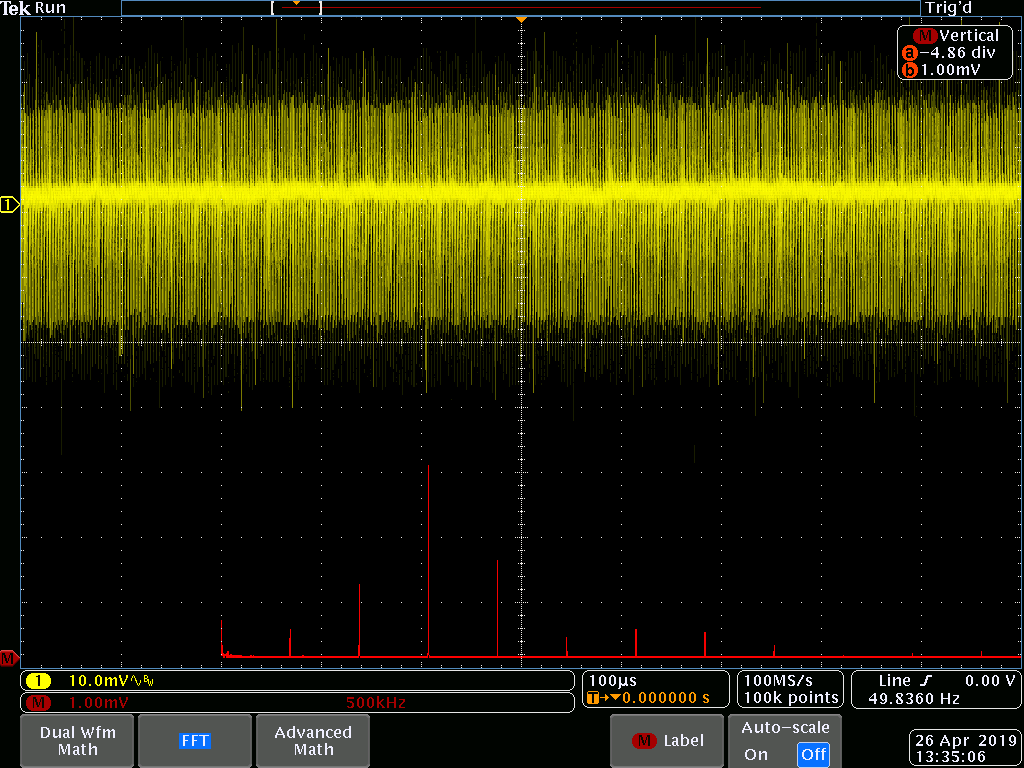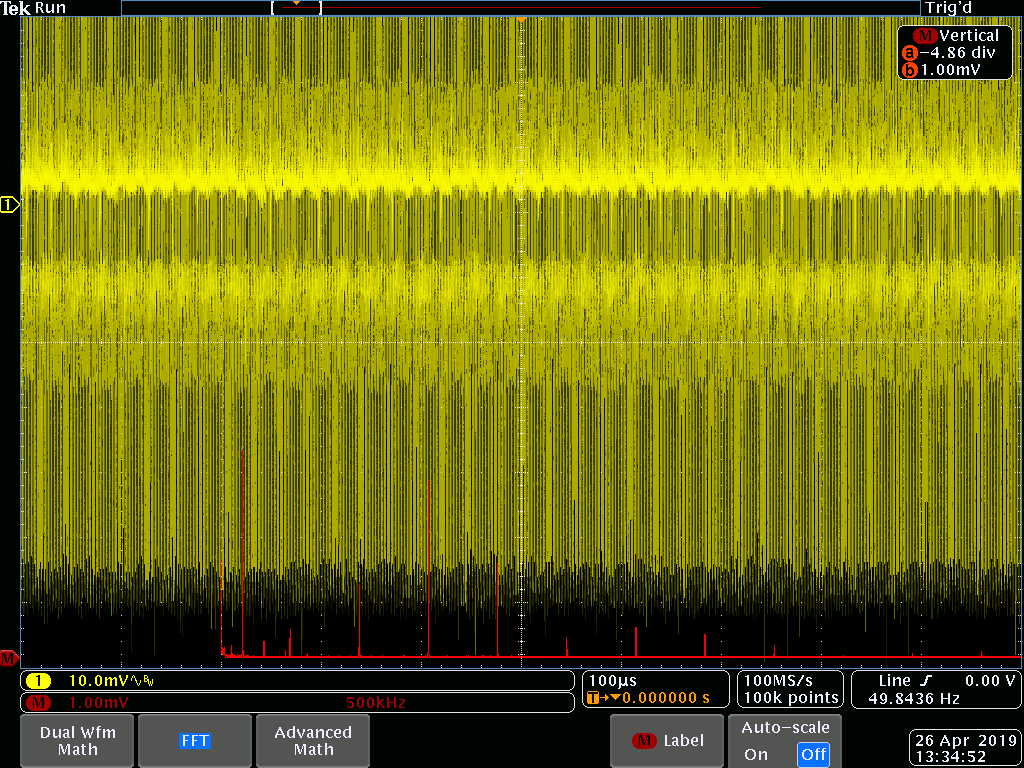Other Parts Discussed in Thread: ADS114S08, TPS7A47
Hello,
I am designing an instrumentation system based on ADS114s08 and I need some help to decide which LDO could serve me better, in terms of cost and quality.
I found that TPS7A4700 is much more expensive, has lower noise and a better PSRR in high frequencies.
In my design I am using a low cost DC-DC and the switching frequncy of the DC-DC is between 100-300 KHz.
Will using the TPS7A4700 have an advantage in my case? and in practice how the power supply noise will show up in the system?
If I have two prototypes with different LDOs, is there an easy way to tell which is performing better?
I have MDO4000 scope but I am not sure if it can help in this matter, I tried to use it in AC coupling mode and compare the two LDO outputs but I didn't notice any difference.
Regards,
Mahmoud





